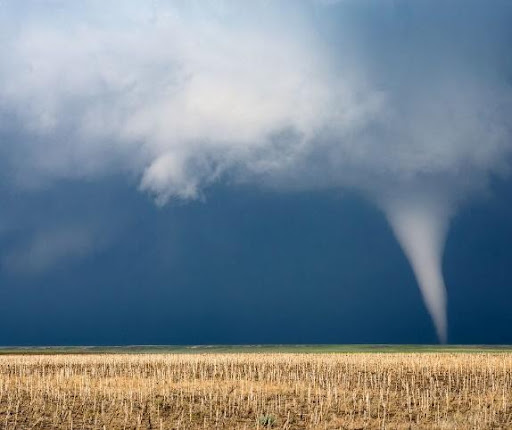Few weather events can cause sudden, widespread damage like a tornado. From broken tree limbs and flying debris to houses lifted from their foundations, these violent storms are sometimes powerful enough to destroy entire neighborhoods in a matter of minutes. The United States experiences more tornadoes than any other country in the world. And the damage they leave behind accounted for more than one-third of insured catastrophe losses from 1997 to 2016.
In the event a tornado touches down near you, it’s always important to know the best ways to keep your family safe – and how to rebuild after the storm. Here are some questions to ask yourself before a tornado warning goes into effect.
Q: IS MY HOME COVERED IF A TORNADO STRIKES?
A: Tornado damage typically falls into two categories: wind damage and water damage.
Wind Damage
Most standard homeowners insurance policies will cover wind damage caused by a tornado since wind is considered a covered peril. That means wind damage to your roof, windows, and siding will generally be taken care of by your insurance company. (Learn more about homeowners insurance.) Water-related damage, however, is a different story.
Flooding or Surface Water Damage
Damage from flooding or surface water is excluded from your homeowners policy. So, for example, if you live near a creek and a severe thunderstorm causes it to overflow into your basement – that’s a flood, so cleanup and damage aren’t covered under a standard homeowners policy.
However, if the water damage directly results from the covered peril – in this instance, wind – then it might be covered, depending on your policy. For example: Let’s say a wind gust during the tornado shatters your front window and the rain pours in all over your living room damaging the drywall and carpet. Unlike the overflowing creek example, the water damage in this example could be covered since the original source of the damage was the wind (a covered peril), not water.
Every situation is different, so check with your agent to understand how this applies to you.
Flood Insurance
Flood damage has to be purchased separately – and there’s a 30-day waiting period before your policy will go into effect. That’s because flood insurance is federally regulated through the Federal Emergency Management Agency’s National Flood Insurance Program. ERIE offers flood coverage through a partnership with American Bankers Insurance Company, a federally funded flood carrier. (Learn more about flood insurance.)
Always check your policy or ask your agent if you have specific questions about what’s covered in your home.
Q: IS MY VEHICLE COVERED FROM TORNADO DAMAGE?
A: During a tornado, flying debris can cause significant damage to your vehicle. Your auto insurance may cover the damage, but it depends on how it happens.
It can be extremely dangerous to drive during a tornado warning or on the flooded roads of the aftermath, so please don’t drive unless it’s absolutely necessary. If you get into an accident while driving, collision coverage can take care of the repairs.
When things besides a car accident damage your car – such as flying debris, a falling tree branch, or a flood – that’s when comprehensive coverage would come into play. Comprehensive coverage is optional under your auto insurance policy.
Q: HOW ELSE SHOULD I PREPARE FOR TORNADO SEASON?
A: A tornado can damage more than your house. It can also affect the things inside that make your house a home. To be prepared in the event of a tornado, keep a home inventory, or a list of your possessions. This will help ensure you have the right coverage and make it easier to quickly file a claim. It’s also a good idea to have a home emergency kit. This can help keep you and your family comfortable if a tornado causes you to lose power or running water.
Source: https://www.erieinsurance.com/blog/does-insurance-cover-tornadoes


Recent Comments